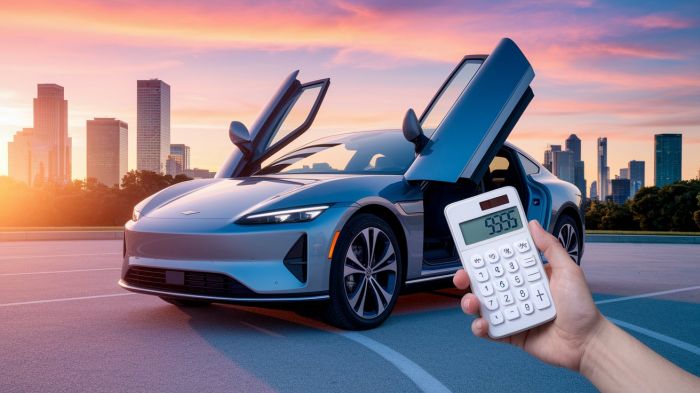Malfunction Indicator Lamp (MIL) may signal a problem with your Honda car or truck. The MIL is a warning light found in the dashboard of your vehicle. It will appear as an illuminated symbol when a problem arises during normal operation or when something needs adjustment or repair.
Malfunction indicator lamp highlights
- Common reasons:any ECU code or other codes
- How to fix:read the codes, have the vehicle inspected
- Possible consequences:anything can happen
- Priority level:High
- Can you drive?Carefully
- DIY repair:Possible
- Repair price range:$100-$1,000

What is a Malfunction Indicator Lamp, and what does it mean when it's on in a Honda car or truck?
A Malfunction Indicator Lamp (MIL) is a warning light found in the dashboard of your Honda car or truck. It will appear as an illuminated symbol when your car or truck's onboard computer has detected an issue that may need adjustment or repair. When the MIL lights up, it's an indication that something is not working properly and needs to be addressed immediately.
When the Malfunction Indicator Lamp lights up, it's usually due to an engine or emissions-related issue that can cause your Honda to run poorly and fail emissions tests. It may also signal other problems with the car, such as faulty sensors, wiring issues, or a failing catalytic converter.
The primary purpose of the Malfunction Indicator Lamp (MIL) is to alert you that something has gone wrong with your car or truck and that it needs to be addressed immediately. It's important to diagnose and repair any issue indicated by the MIL as soon as possible because failure to do so can result in serious damage to your vehicle or even cause a safety hazard.
What are some common Honda MIL codes, and what do they mean?
Honda vehicles utilize a multitude of codes to diagnose and troubleshoot problems with the MIL. Each code corresponds to a specific issue, such as an emission-related problem or a faulty sensor. Some of the most common Honda MIL codes are P0420, P0455, P0171, P0300, etc.
P0420 is an emissions-related code that indicates a malfunction in the catalytic converter. P0455 is an evaporative emission control system leak code that typically indicates a faulty or leaking fuel cap, leaky lines, or a clogged charcoal canister. P0171 and P0300 are fuel system codes that indicate a lean fuel mixture or misfiring cylinders.
If your Honda doesn't show MIL codes, you will need to use OBD2 (Onboard Diagnostics) to check for any issues that might be causing the MIL light to stay on. OBD2 is a computer system that can be used to diagnose and troubleshoot a variety of issues with your vehicle, including those related to the MIL. You can find OBD2 scanner tools online or at auto parts stores, or you can take your car or truck to a mechanic for an OBD2 scan.
It's important to properly diagnose the cause of the MIL light before attempting any repairs. A qualified technician can use a scan tool to read the trouble codes and determine why the MIL is on so that appropriate action can be taken.
MIL Indicator Always Stays On vs. Occasional Flashes
The MIL may either stay on constantly or flash intermittently, depending on the nature of the issue. If it stays on, it typically indicates a problem that needs to be addressed immediately. On the other hand, if it flashes, it usually indicates less serious issues, such as misfires. Still, even in the case of a misfire, it is important to have the problem diagnosed and addressed as soon as possible, as in severe instances, it may lead to more serious issues or even put your car on fire.
If your MIL indicator blinks, park your car immediately. You should wait for about 10 minutes before restarting the engine, as this will give you time for the issue to cool down. If your MIL still continues to flash after that, have it checked and repaired immediately.
If your MIL does not turn off after several driving cycles, it may be due to a persistent problem that needs to be addressed. In this case, it's best to take your car or truck to a qualified mechanic for diagnosis and repair.
Remember, it is absolutely normal when MIL light illuminates for several seconds when you start your car's engine.
Some possible causes of the MIL coming on in your Honda
There are many potential causes for the Malfunction Indicator Lamp coming on in your Honda car or truck. Common causes can include faulty sensors, vacuum leaks, faulty wiring, a failing catalytic converter, an exhaust leak, an injector issue, and more.
A faulty fuel pump or clogged fuel filter can cause issues that result in the MIL coming on. A defective oxygen sensor may also trigger the MIL to come on, as it monitors exhaust emissions and can affect the air-fuel ratio of your vehicle's engine.
It's also possible that there is a glitch in the onboard computer that is causing the MIL to illuminate. In this case, it may be necessary to reset the system or replace/reprogram certain components for the MIL light to turn off.
Specific instructions for how to reset the MIL on different models of Hondas
You can reset the Malfunction Indicator Lamp (MIL) on a variety of Honda models using a few different methods. The easiest way is to pull off the road and turn off the car, wait a few minutes, and then turn it back on. If the MIL indicator is still on, then you might need to try other methods.
You can also try the on-off method, which involves turning off the engine and restarting it after several seconds. Try to turn it off and start it again 3-4 times. If this does not work, then you should take your car to the mechanic.
What to do if the MIL Indicator doesn't Disappear?
Drive your car to the nearest auto repair shop or dealership to have it checked out if the MIL indicator doesn't disappear. You should drive slowly, and your speed shouldn't exceed 50 kph. Make sure to look out for any warning signs and be aware of your surroundings.
How much will it cost to have a mechanic troubleshoot and fix the problem for you?
The cost of having a mechanic troubleshoot and fix your Honda MIL issue will depend on the specific cause of the light. Generally speaking, it will cost anywhere between $50 and $500, depending on the complexity of the repair. If you're having trouble diagnosing the issue or have a difficult time accessing the components, then it may cost more.
Regardless of the cause, it's important to get your car checked out as soon as possible if the MIL light is on. This will help you avoid any further damage or safety hazards that may arise from the issue. Your warranty may not cover any repairs associated with damage done to your car if you ignore the MIL indicator and don't address the issue in time.
Bottom Line
The Malfunction Indicator Lamp (MIL) is a warning light that alerts you to a potential issue with your car or truck and should be taken seriously. There are many potential causes of an illuminated MIL light, such as faulty sensors, vacuum leaks, exhaust leaks, fuel system problems, and more.
Properly diagnosing the cause of the MIL light is important in order to take appropriate action and avoid any further damage or safety hazards that may arise from the issue. Depending on the nature of the repair, it may cost anywhere between $50 and $500 to have a mechanic diagnose and fix the issue. Therefore, it's best to have your vehicle checked out immediately if the MIL light is on.
About the authors
The CarAraC research team is composed of seasoned auto mechanics and automotive industry professionals, including individuals with advanced degrees and certifications in their field. Our team members boast prestigious credentials, reflecting their extensive knowledge and skills. These qualifications include: IMI: Institute of the Motor Industry, ASE-Certified Master Automobile Technicians; Coventry University, Graduate of MA in Automotive Journalism; Politecnico di Torino, Italy, MS Automotive Engineering; Ss. Cyril and Methodius University in Skopje, Mechanical University in Skopje; TOC Automotive College; DHA Suffa University, Department of Mechanical Engineering






Add comment